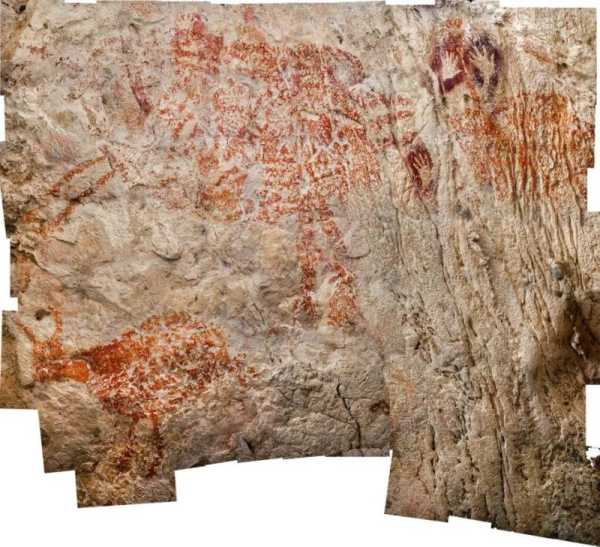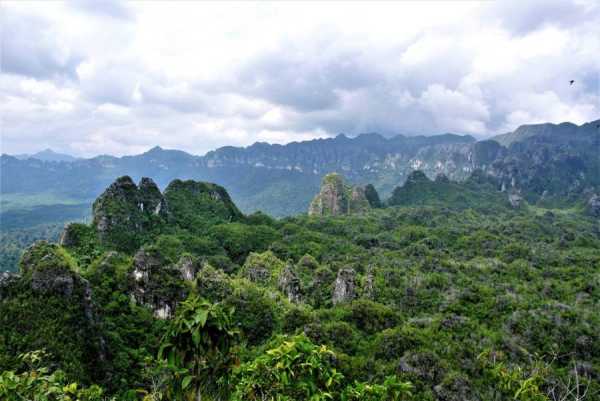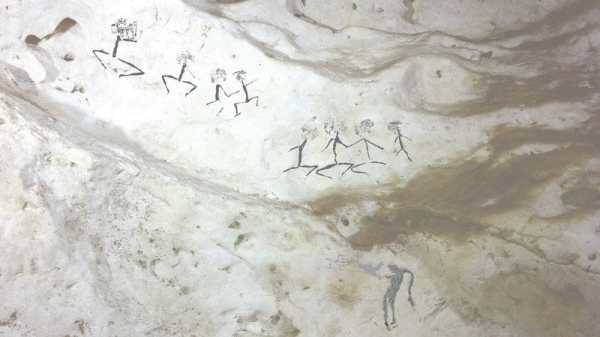Some researchers believe that the animal images and other rock art found in the cave represent some of the oldest evidence of the origins of human culture.

Luc-Henri Fage A group of cows in a piece of cave art that is at least 40,000 years old.
A team of scientists in Indonesia has made a groundbreaking discovery of ancient images that shed light on one of humanity's oldest cultures.
Archaeologists have discovered the oldest known depiction of an animal in the remote mountainous regions of the Indonesian province of East Kalimantan on the island of Borneo. The bull-like composition adorns the wall of the Lubang Jeriji Saleh cave.
This artwork, depicting three cows, was created 40,000 years ago, making it the oldest example of figurative painting, a style that focuses on realistic reproduction of objects rather than abstract forms.
“It's clear that the author was consciously trying to convey the image of what he saw, whether it was an animal or a person,” Maxime Ober, an archaeologist and co-author of the study published inNature , told NPR .

Pindi Setiawan
A mountain range in East Kalimantan (Borneo) where caves with ancient images are located.
Dr. Ober and his colleagues analyzed the calcite deposits around the painting using modern dating techniques, which allowed them to determine the age of the work.
The composition depicts three cows, the largest of which, according to National Geographic , is more than two meters long. One of the animals has marks resembling a spear wound. The work is made with a red-orange pigment based on iron oxide and is part of a series of similar images found in the cave.

Kinez Riza The outlines of palms, painted in dark pink, decorate part of the walls of a cave in Borneo.
Scientists also discovered a series of images dating back to the second stage of cave art (16,000–21,000 years ago). These works were made with purple pigment and are believed to depict human figures.
These artistic images of animals, handprints and people add to the list of artifacts that demonstrate the evolution of ancient people's perception of the surrounding world and the ways in which it was reflected in art.
“There seems to be a shift from animal representation to human representation. Interestingly, a similar trend is seen in Europe,” Dr Ober told the BBC .

Pindi Setiawan/Nature
Depictions of human figures in Borneo, estimated to be approximately 20,000 years old.
The shift from abstract forms to figurative styles in ancient art is of enormous significance to cultural history. As National Geographic notes, these rock paintings may be among the first manifestations of what we now define as human civilization.
“For many of us, this is a true embodiment of human nature at its deepest level,” April Nowell, a paleolithic archaeologist at the University of Victoria, told National Geographic .
The discovery in the cave with the image of cows is striking in its value, and its symbolic meaning in the context of the development of human culture makes the discovery truly innovative.
After this immersion in ancient art, you can check out the oldest depiction of a smiley face on an ancient Turkish vessel or take a virtual tour of Göbekli Tepe, the oldest temple complex on the planet.
Sourse: www.allthatsinteresting.com





